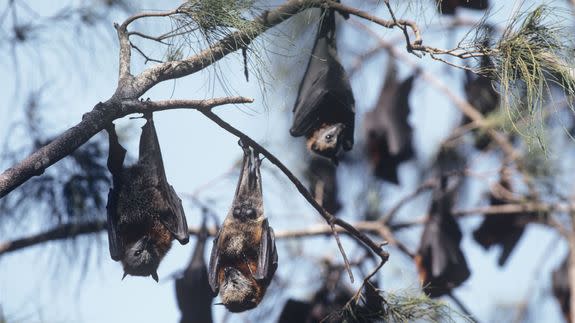Australian town taken over by 100,000 bats, residents feel like prisoners

Bats have been the overlords of this small Australian town for months. Now they're about to get shooed away.
Approximately 100,000 flying fox bats, who have made the New South Wales holiday town of Bateman's Bay their home, are about to get their marching orders. It follows an announcement of A$2.5 million in funding to relocate the bats on Monday.
SEE ALSO: Dozens of sharks in intense feeding frenzy on whale in Australia
It's welcome news for residents, who have felt trapped in their homes like "prisoners" due to the animal plague. Since March, the council has noted a significant increase in complaints from the residents.
"We've had many residents complain they feel they're prisoners in their own homes, they can't go out, they have to have air conditioning on the whole time, windows closed," New South Wales Environment Minister Mark Speakman told ABC News.
"[The circumstances] really amount almost to a state of emergency."
The bat onslaught has also meant locals can't go about their daily business without the sound of thousands of bats constantly fluttering.
"I can't open the windows, I can't use the clotheslines, it's just, I can't study because the noise just goes constantly. I can't concentrate. It's not fun," Danielle Smith, a town resident, told Sky News.
"The bats came and they are just out of control. We just can't do anything because of them."
As for exactly how authorities will get rid of them, that is something that the local council is still trying to figure out.
In the council's draft plan, it has listed solutions including spraying down trees with a deterrent or using "waving man inflatables" — you know, like you'd see at the front of a used car dealership. Yes, seriously.
The grey-headed flying fox measures between 23 to 28 centimetres (9 to 11 inches) long and mostly feeds on fruits such as figs, as well as pollen and nectar, according to the Australian Museum. They've been listed as a vulnerable species, so killing them is illegal.
It's certainly a problem that can't be batted away easily.
